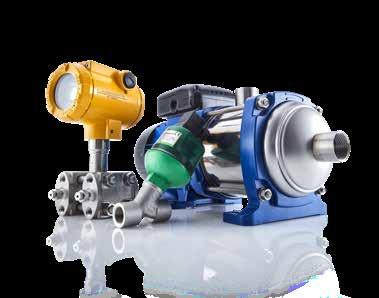
4 minute read
Vision, business concept, goals and strategies
VISION
OEM will be a leading technology trading group in industrial components and systems in selected markets in Northern, Central and East Central Europe.
BUSINESS CONCEPT
oem offers an extensive and detailed range of industrial components and systems from leading suppliers. A well-structured local market organisation and efficient logistics make oem a better alternative to the suppliers' own sales organisations. oem provides a high level of expertise and service and markets the products according to the specific conditions of each market.
GOALS AND OBJECTIVES
oem's overall business objective is to be one of the largest technology trading companies in its chosen geographic markets. Profitability will be on par with, or better than, that of the largest players in each market.
Financial targets
oem shall deliver sustainable profitable growth coupled with a good return on shareholders' equity and with minimal financial risk. The company has four financial targets: Sales growth
Minimum sales growth of 10% per annum through a business cycle. In 2020, sales remained unchanged from the previous year. 1 percentage point came from acquisitions, foreign currency exchange rate movements had a negative 1 percentage point impact on growth and organic growth was 0. Average annual sales growth was 8% in the last five-year period. EBITA margin
A minimum ebita margin of 10% per annum through a business cycle. In 2020, the ebita margin reached 12.9%.
Return on equity
Return on equity reached 26.1% in 2020.
The average return on equity has been 28.5% for the past five years. Equity/assets ratio
A minimum equity/assets ratio of 35%.
The equity/assets ratio was 69% at the end of 2020. The average equity/assets ratio has been 59% for the past five years.
SALES GROWTH (%)
10%
7 15 14 6 0
16 17 18 19 20
The result for 2020 was 0% compared with the minimum target of 10%.
EBITA MARGIN (%)
10%
11.6 11.2 11.0 11.7 12.9
16 17 18 19 20
The result for 2020 was 12.9% compared with the minimum target of 10%.
RETURN ON EQUITY (%)
20%
30 28 29 29 26
16 17 18 19 20
The result for 2020 was 26% compared with the minimum target of 20%.
EQUITY/ASSETS RATIO (%)
35%
53 54 59 62 69
16 17 18 18 20
The result for 2020 was 69% compared with the minimum target of 35%.
Face-to-face meetings are critical to understanding customer needs and a practical way for OEM to offer its experience and technical expertise.
STRATEGIES
oem has defined five strategic areas that are important to its future development and success and for achieving its financial targets.
Growth
oem will create growth organically, through acquisitions and geographic expansion. These three together will generate growth that meets the growth target. 1) Organic growth oem gives priority to organic growth. oem achieves organic growth by increasing its market share and expanding the range that the company offers its customers. oem's operations are expected to grow above the underlying market growth in those areas where the company is well established. In markets where oem has yet to achieve a position among the five largest players, the aim is to achieve considerably higher growth. 2) Acquisitions
Business combinations are central to oem's strategy for developing its operations. oem acquires companies and product ranges that strengthen its market position within current product areas in existing markets, and companies that add a brand-new range or give oem access to a new geographic market. 3) Geographic expansion
Geographic expansion into new markets will take place when it is possible for oem to become a prominent player by representing several of the company's suppliers.
Product range
oem shall offer a product range consisting of industrial components and systems from leading suppliers. The range is adapted to the local markets in which oem operates. oem's key strategy is ongoing development of its range and it implements this strategy through partnerships with existing and new suppliers. Each local marketing organisation is also tasked with finding new products that will further enhance the competitive edge of the portfolio of offerings.
Marketing activities
oem shall have strong marketing activities based largely on faceto-face selling. Personal meetings are crucial to understanding customer needs, and a practical way for oem to offer its experience and technical expertise. Face-to-face selling is supported by digital and printed marketing communication materials.
Logistics
oem shall develop logistics solutions that deliver excellent customer service and quality and a high level of cost-efficiency. The Group has 15 logistics units. Each unit adapts its range to current operations and works towards greater coordination of the stockholding with other warehouses. In connection with many of oem's logistics units there are processing units that effectively provide unique adjustments for specific customers and the installation of products.
Employees and management
There should be a familial culture with a focus on entrepreneurship in all operations. oem shall give its employees opportunities to develop within the company, taking account of business goals and strategies as well as the employees' ambitions. Recruitment and employee strategies will lead to a significant number of leadership positions being filled internally.







